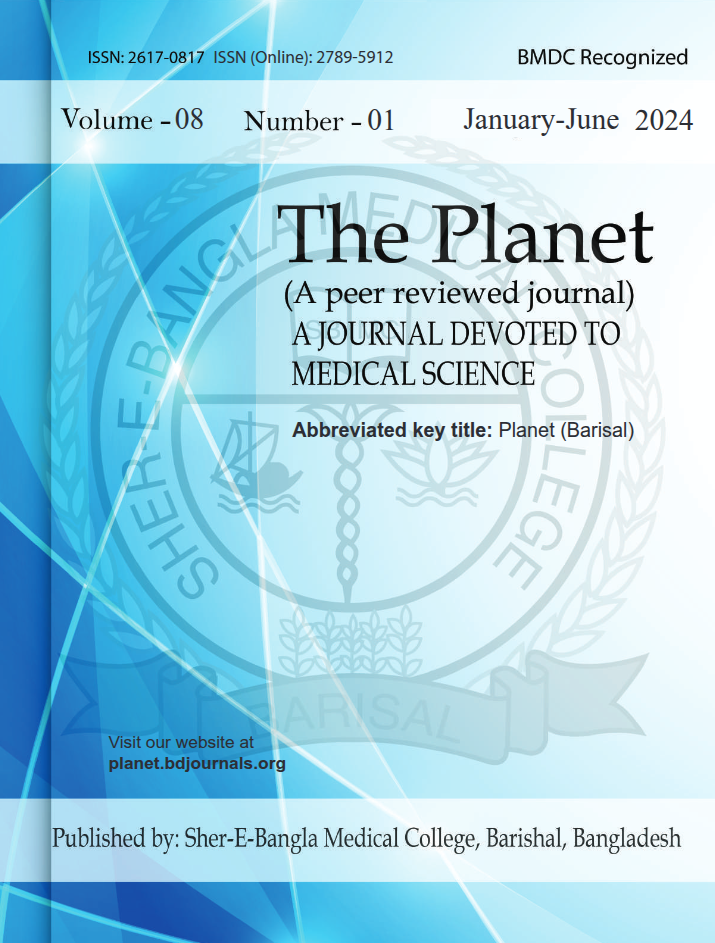Published 07-07-2024
Keywords
- Organophosphorus poisoning,
- sociodemographic profile,
- POP scale,
- pesticide ingestion,
- clinical severity
- rural health,
- Bangladesh ...More
Copyright (c) 2024 The Planet

This work is licensed under a Creative Commons Attribution 4.0 International License.
How to Cite
Abstract
Background: Organophosphorus (OP) compounds, extensively used in agricultural practices, constitute a leading cause of both accidental and intentional poisoning in low- and middle-income countries. Despite advancements in clinical management, OP poisoning remains associated with high morbidity and mortality, particularly in rural populations with limited access to timely care. Aim of the study: This study aimed to evaluate the sociodemographic distribution and clinical severity of patients presenting with OP poisoning, using validated severity scales and outcome parameters to inform prevention strategies and enhance emergency response protocols. Methods & Materials: A cross-sectional observational study was conducted within one year period at Dhaka Medical College Hospital, in Dhaka Bangladesh. A total of 213 patients with confirmed OP poisoning were enrolled. Sociodemographic variables, exposure characteristics, clinical manifestations, and outcomes were systematically documented. Severity was graded using the Peradeniya Organophosphorus Poisoning (POP) scale. Data analysis was performed using SPSS version 26.0, and associations between clinical variables and outcomes were tested using the Chi-square test, with statistical significance set at p<0.05. Result: The mean age of the cohort was 34.32 ± 8.20 years, with the majority aged 31–40 years (36.62%). Females (59.62%) and rural residents (83.10%) predominated. The most affected occupational group was housewives (47.89%). Suicidal ingestion accounted for 83.57% of exposures, and oral intake was the most common route. Respiratory distress, miosis, and bradycardia were the most prevalent clinical features. Mechanical ventilation was required in 22.54% of cases. Respiratory failure (59.62%) and aspiration pneumonia (18.78%) were the most frequent complications. Family conflict (28.64%) and financial stress (23.94%) were the leading self-reported motivations behind poisoning. Conclusion: Organophosphorus poisoning in Bangladesh disproportionately affects young adult females from rural settings, primarily due to intentional ingestion linked to psychosocial stressors. The clinical burden is compounded by delayed presentations and the need for intensive care in a subset of patients. Targeted public health interventions, including mental health support and community-based pesticide regulation, are imperative to reduce incidence and improve outcomes.



